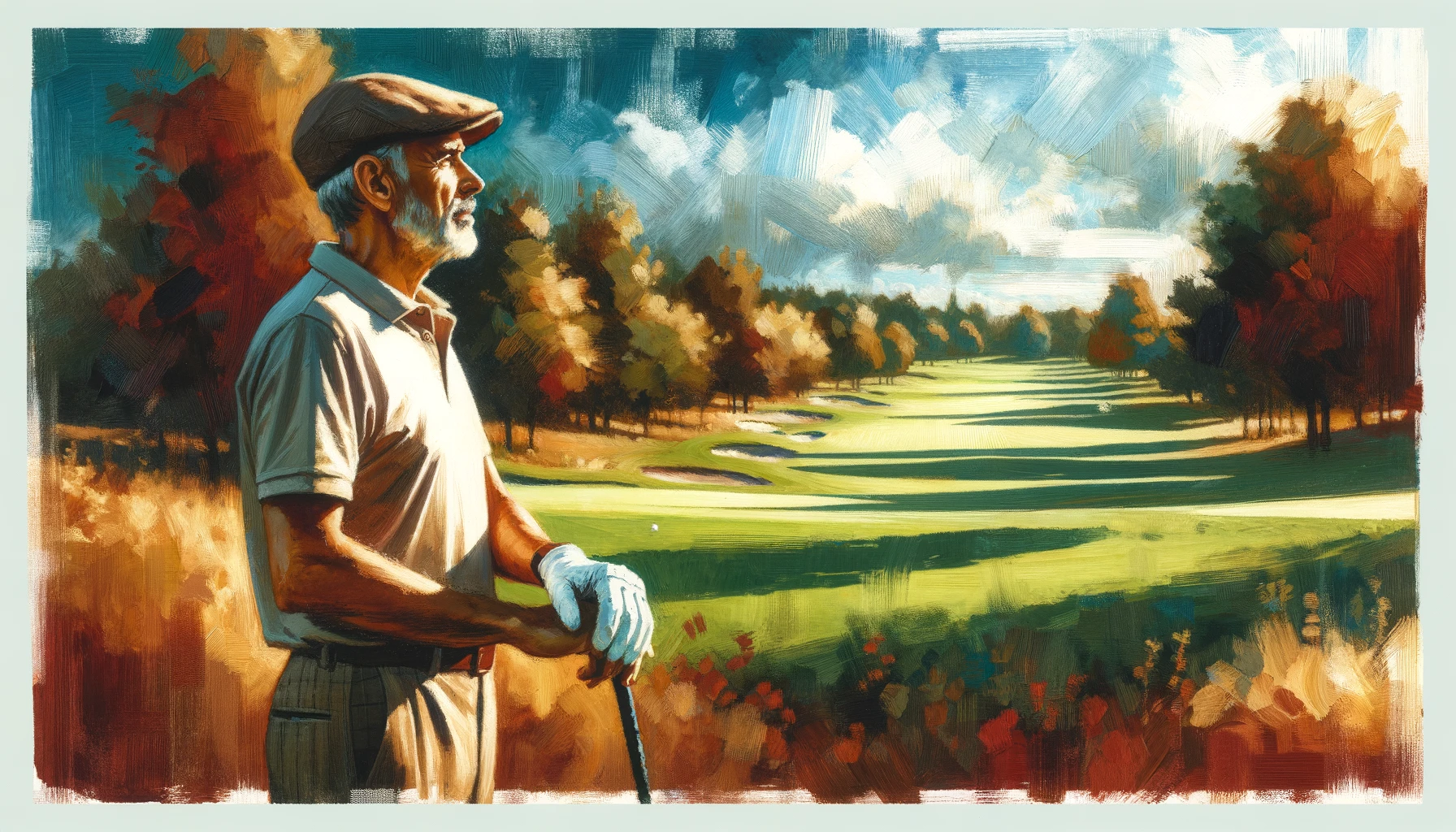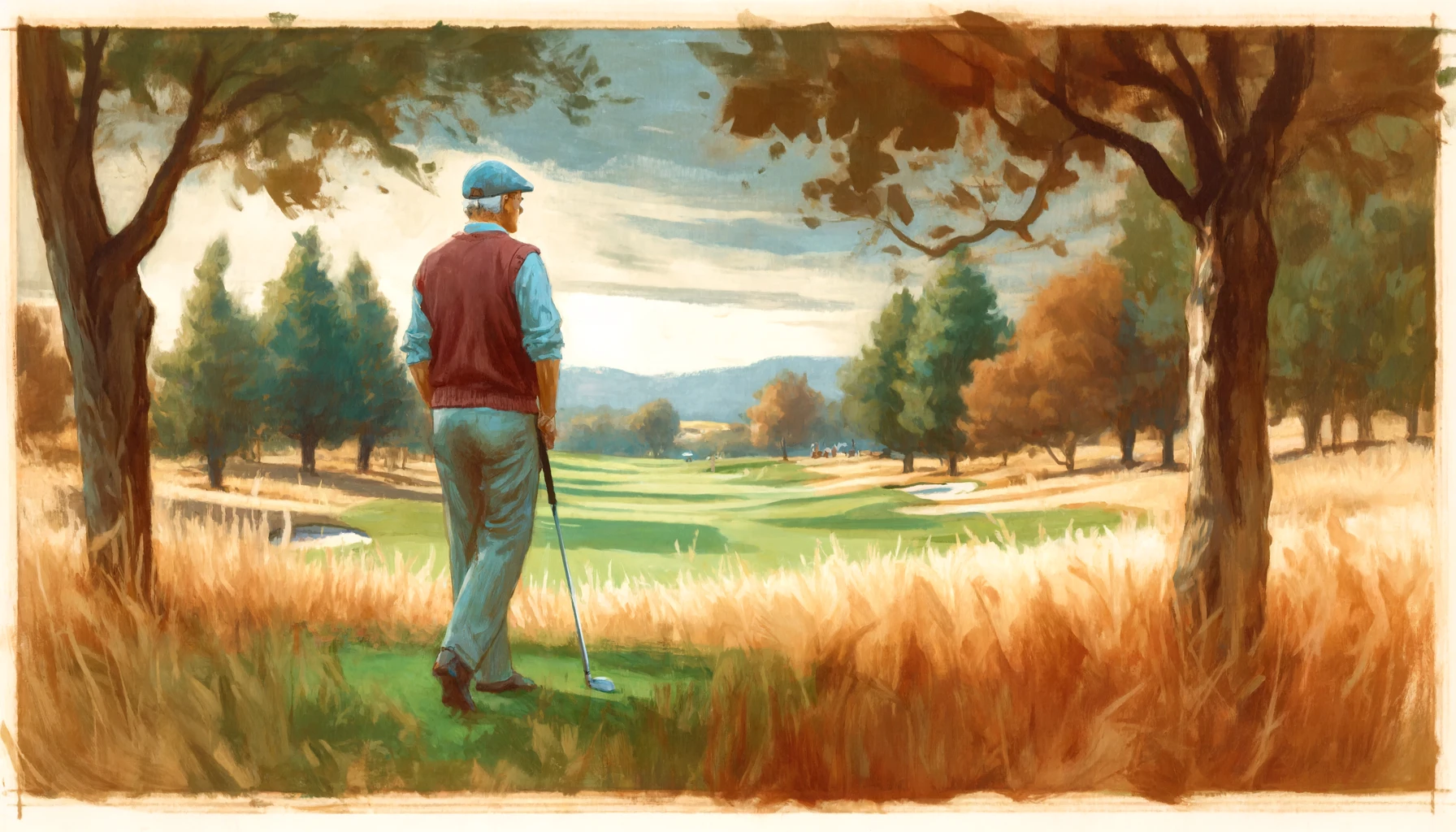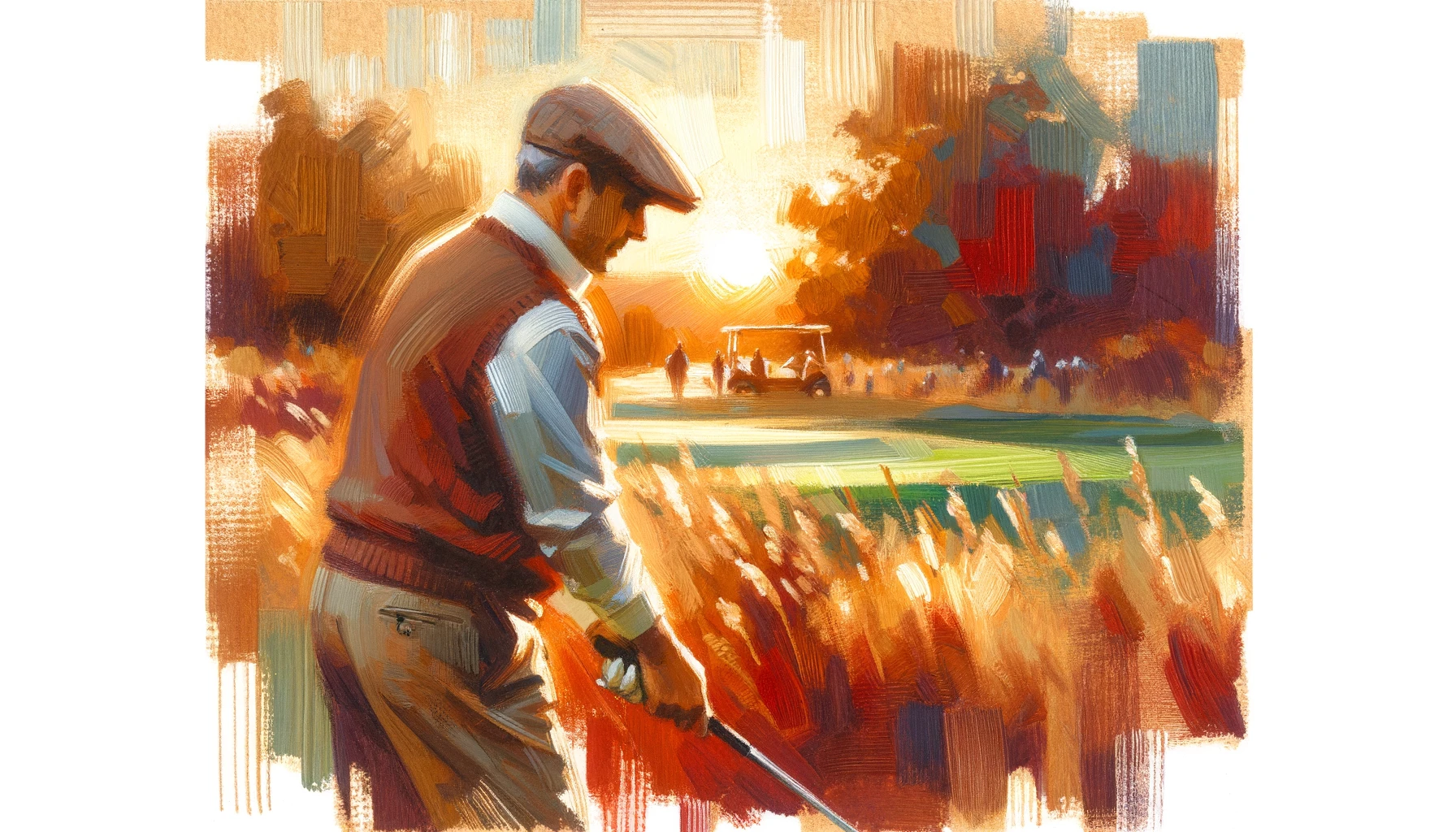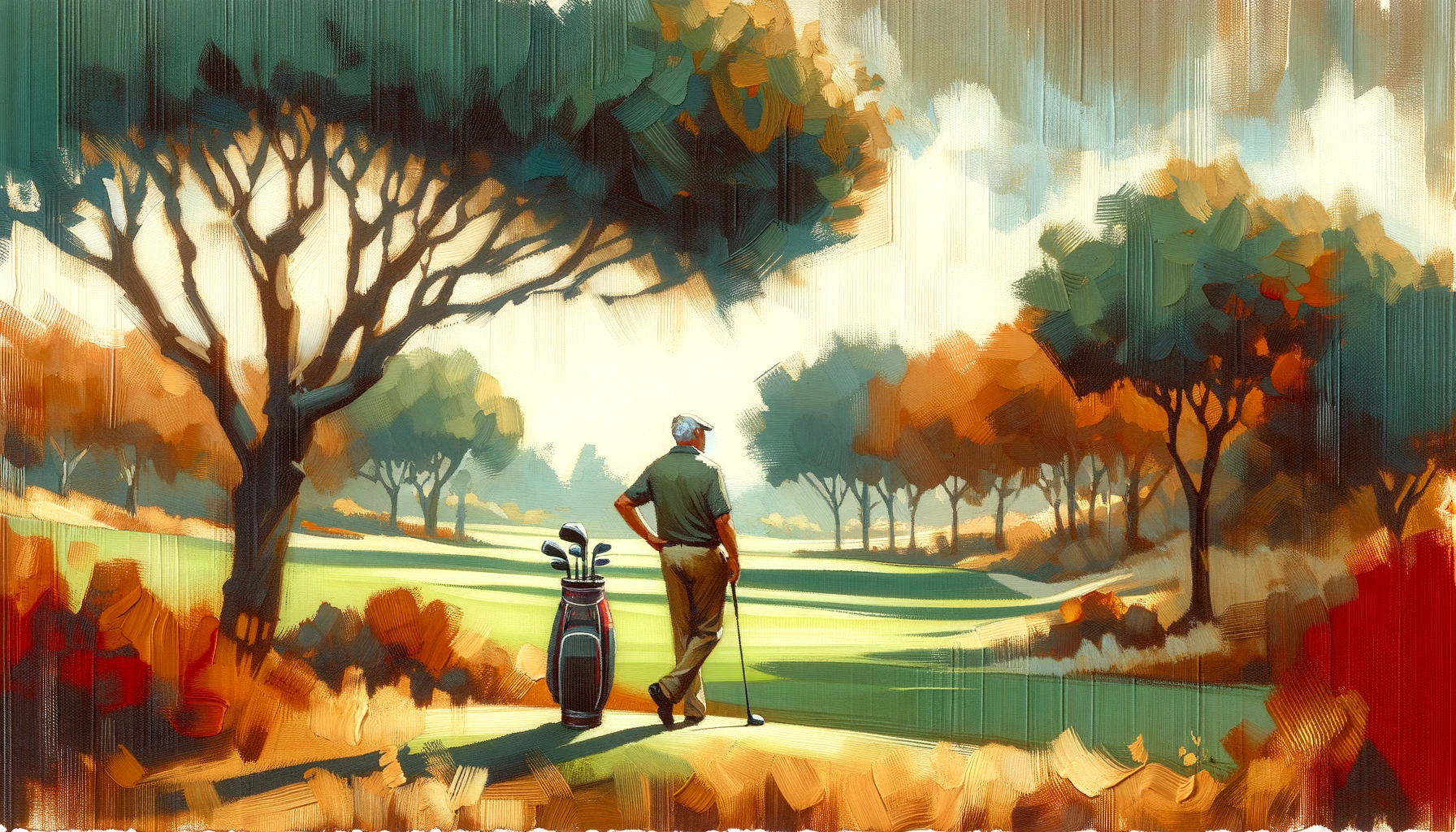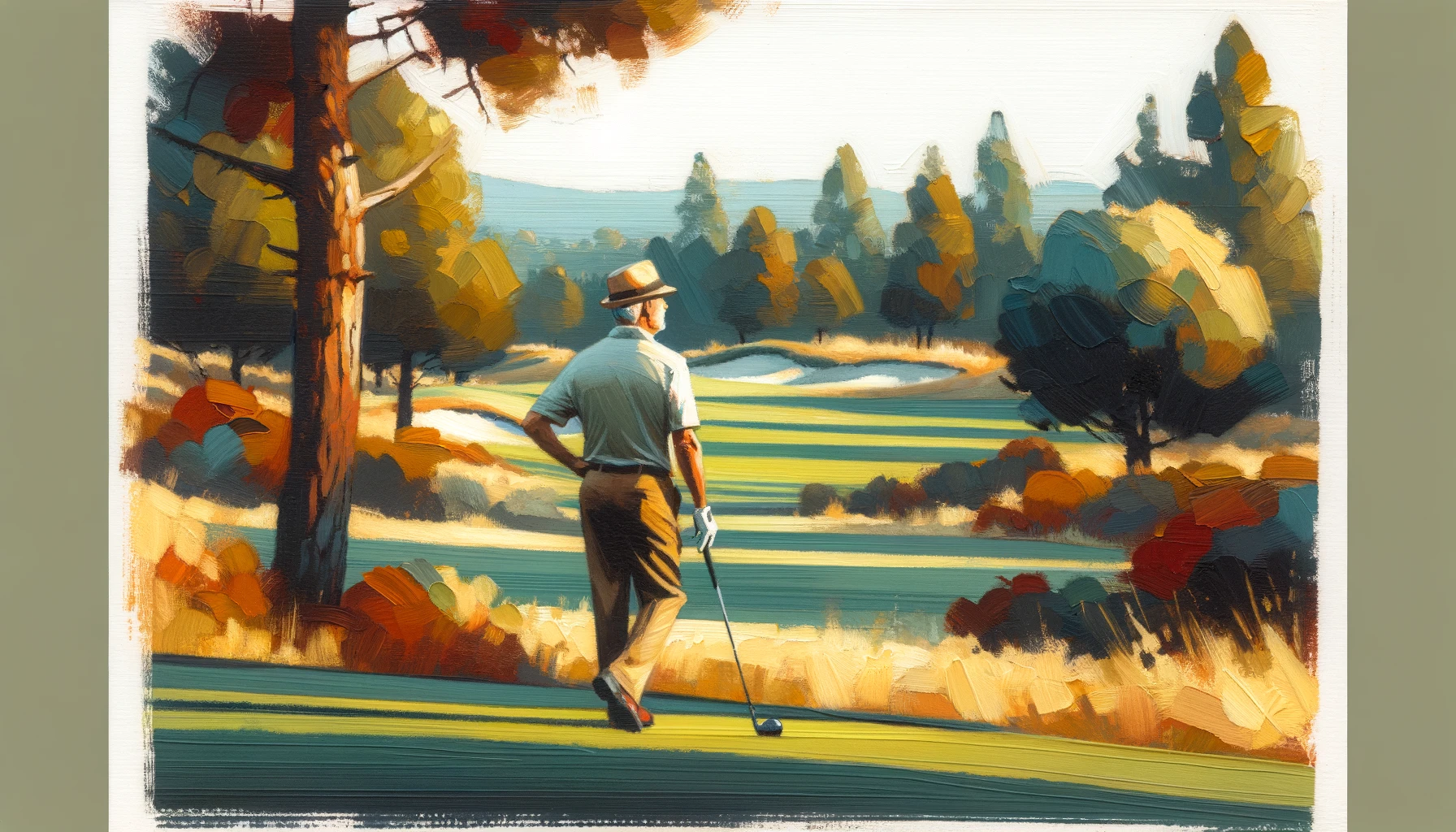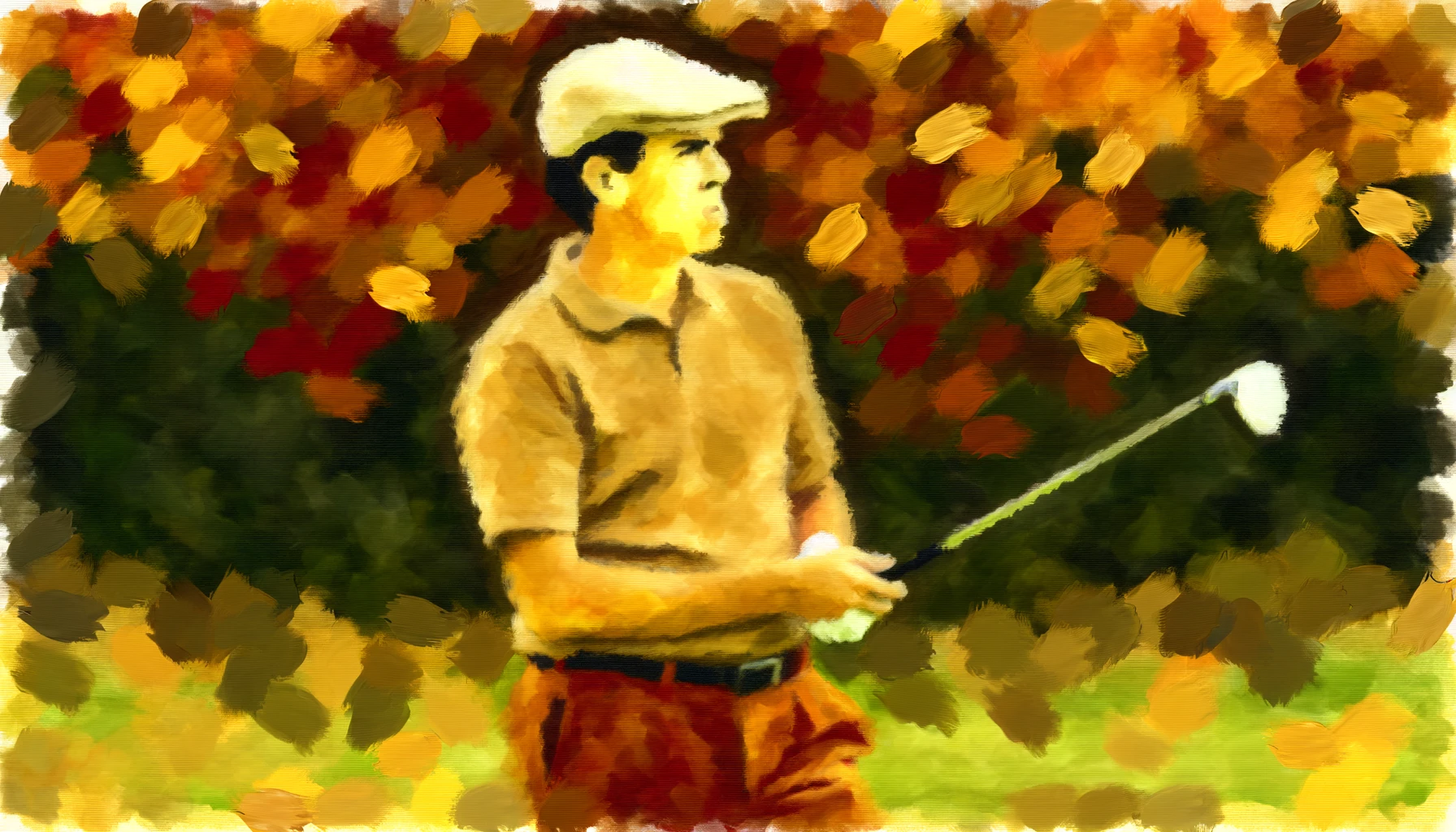A Weekend Warrior's Guide to Mastering Advanced Golf Techniques
Are you looking to lower your golf scores and outshine your competition on the course? Mastering the art of improving technical skills is your ticket to success. This guide unpacks essential techniques to refine your game, from advanced shots like the draw and fade to precision in shot distance and direction control. If you're short on time, jump to our key takeaways or FAQ section for a quick boost. Elevate your game today and become the golfer you've always dreamed of being.
As a golfer, you know the course is more than just a game; it's a quest for improvement, a battle against the elements, and, most importantly, a journey towards mastering oneself. But if you've ever felt like your progress has plateaued or that you're just not getting the results your effort deserves, it's not your fault. The golfing world is awash with tips, tricks, and so-called 'secrets' that promise the world but often fail to deliver. This information overload can lead you down the wrong path, leaving you more frustrated than when you started. But, let's put those fears to rest. You can dominate the course; you just need the right guidance.
The big equipment manufacturers and mainstream golf media would have you believe that the only way to improve is through the latest gear or by following conventional wisdom. They're wrong. Their narrative is designed to keep you buying and consuming, not necessarily improving. It's time to throw rocks at these enemies of progress. The truth is, real improvement comes from understanding and mastering the technical aspects of the game, something often overshadowed by the glitz and glamour of brand endorsements.
That's where this guide comes in. You've probably been led to believe that without spending every waking moment on the course or draining your bank account on the latest gear, you can't get better. This is a myth. Real improvement, the kind that makes your buddies green with envy as you effortlessly outdrive them, comes from a deep understanding of the game's technical aspects. This guide, grounded in the Golfer's Growth Journey: Fairway Mastery Blueprint, will demystify these technical skills, offering you a clear path to golfing excellence. It's time to unlock your true potential, shock your friends with your newfound prowess, and perhaps, change the world one round at a time. Are you ready to embark on this journey?
 A serene day perfect for golfing mastery.
A serene day perfect for golfing mastery.From Frustration to Mastery: Transform Your Golf Game Today
My journey began on the fairways, a weekend golfer among many, navigating through the highs and lows of the game. The frustration of inconsistent play was a constant companion, shadowing the joy I found in golf. Despite my love for the sport, my technical skills were lacking, leaving me feeling defeated more often than not.
Determined to change my narrative, I embarked on a quest for improvement. I consumed every piece of golf advice I could find, from magazines to online forums. Yet, progress was slow, and my game remained frustratingly erratic. It seemed like I was destined to remain a weekend golfer with unfulfilled potential.
Then, I discovered a new approach to improving my technical skills. It wasn't about buying the latest equipment or mimicking the pros; it was about understanding the fundamentals of my swing, the physics of the ball, and most importantly, the mental aspect of the game. This revelation was my turning point.
I developed a framework focused on improving technical skills through targeted practice, mental conditioning, and strategic play. This "Fairway Mastery Blueprint" became my guide, emphasizing the importance of practice with purpose, the mental game, and embracing the community of golfers around me.
The transformation was profound. Not only did my technical skills improve, but my approach to golf and life evolved. I learned the value of persistence, the importance of a positive mindset, and the joy of sharing my journey with others. Golf became more than a game; it became a pathway to personal growth and fulfillment.
This is not just my story. It's a journey many golfers embark on, seeking not just to lower their scores but to find joy and fulfillment in the game they love. Join me in transforming your game and life through the "Fairway Mastery Blueprint."
The Importance of Improving Technical Skills
In the world of golf, technical skills are the cornerstone of a player's ability to perform under pressure, adapt to the ever-changing conditions of the course, and ultimately, lower their handicap. It's the difference between being just another player on the course and becoming a master of the fairways.
Why are technical skills so crucial? They allow for the execution of advanced shots like the draw and fade, which can turn a difficult hole into an opportunity for birdie. Understanding the nuances of these shots, when to use them, and how they can shape your game is essential for any golfer looking to step up their game. But mastering these skills doesn't just happen overnight. It requires practice, patience, and a willingness to delve deep into the mechanics of your swing and the strategies behind your game plan.
For many weekend golfers, the dream is to play like the pros - to send the ball soaring down the fairway with ease and precision, to navigate the course with the confidence of a seasoned player. But this dream often feels just out of reach. The secret, however, isn't in possessing a natural-born talent or spending every spare moment on the course. It lies in a dedicated focus on improving technical skills. By honing these skills, you not only enhance your understanding of the game but also unlock a new level of play that brings you closer to the golfer you aspire to be.
Let's break it down further:
1. Mastering the Art of the Draw and Fade: These shots are invaluable tools in your golfing arsenal. A well-executed draw or fade can navigate around obstacles, work with the wind, and set up the perfect approach to the green. But more than just the mechanics, understanding the when and why behind these shots can transform your strategy on the course.
2. Precision in Distance and Direction Control: It's not just about hitting the ball hard; it's about hitting it right. The ability to control the distance and direction of your shots with various clubs is a hallmark of technical mastery. This skill allows you to tackle any hole, regardless of its complexity, with a calm and calculated approach.
3. Strategies for Windy Conditions: Golf is an outdoor sport, subject to the whims of nature. Learning to adjust your game to accommodate the wind can mean the difference between a round you're proud of and one you'd rather forget. It's about more than just brute force; it's about finesse and adaptation.
The path to improving your technical skills and becoming a fairway master is not an easy one. It's fraught with challenges and setbacks. But remember, every golfer's journey is unique, and the struggles you face today are laying the foundation for the victories of tomorrow. Embrace the process, focus on the technical aspects of your game, and soon, you'll find yourself playing at a level you once thought was reserved for the pros.
Remember, the ultimate goal of improving technical skills isn't just about lowering your score; it's about enriching your life through the game of golf. It's about the satisfaction of hitting that perfect shot, the camaraderie of a round with friends, and the personal growth that comes from pursuing excellence. As you embark on this journey, keep these goals in mind, and let them guide you towards becoming not just a better golfer, but a master of the fairways.
 Embracing the calm: refining golf skills amidst nature.
Embracing the calm: refining golf skills amidst nature.Enhancing Your Understanding of Advanced Shots
The quest for golfing excellence is a journey of continuous learning and refinement. For weekend warriors looking to elevate their game, understanding and mastering advanced shots is a critical milestone. These shots, including the coveted draw and fade, are not just about showcasing skill—they're about strategically navigating the course to produce the best possible outcomes.
1. The Art of the Draw and Fade: These shots are more than just impressive to watch; they're essential tools in your golfing toolbox. A draw shot, with its gentle right-to-left curve (for right-handed golfers), can help you avoid obstacles and gain extra yards with roll. Conversely, a fade, moving left to right, offers precision and control, especially when you're aiming to land softly on the green or navigate tight corners. The key to mastering these shots lies in understanding the mechanics—grip, stance, and swing path—and practicing until they become second nature.
2. When to Use Them: Knowing when to employ these shots can significantly impact your strategy on the course. A draw is particularly useful for adding distance in dry conditions or when the wind is at your back, while a fade can be invaluable for controlling your landing on a firm green or when playing against a crosswind. It's not just about being able to execute these shots but knowing when they will serve your game best.
3. Practice Makes Permanent: The path to mastering these advanced techniques is paved with deliberate practice. This means not just hitting balls on the range but setting specific goals for each practice session. For example, work on controlling the degree of your draw or fade, targeting specific landing zones, and adjusting your swing based on wind conditions. Technology, such as launch monitors, can provide instant feedback on your shot shape and help you fine-tune your approach.
4. Learning from the Pros: One of the best ways to improve your understanding of advanced shots is to study the pros. Watch how they adjust their play based on the course layout and conditions. Notice their shot selection, the way they set up for a draw or fade, and how they recover from less-than-ideal situations. Many professional golfers share insights on their strategies and techniques through interviews, instructional videos, and social media. This insider information can be a goldmine for serious golfers looking to expand their repertoire.
5. Patience and Persistence: Developing proficiency in advanced shots requires patience and persistence. There will be frustration and setbacks, but each mis-hit is an opportunity to learn and adjust. Remember, even the most seasoned golfers continuously work on their game, refining and adjusting their techniques as they strive for consistency and excellence.
Embracing the journey of mastering advanced shots not only improves your technical skills but also deepens your love for the game. As you learn to shape your shots with intention and strategy, you'll find new ways to challenge yourself and achieve your golfing goals. Keep pushing, keep practicing, and soon, you'll be playing shots you once thought were beyond your reach.
Precision in Distance and Direction Control
A golfer's ability to control distance and direction with each shot is what separates the great from the good. It's a skill that requires not just physical capability but a deep understanding of the game's mechanics and an intimate knowledge of your own swing. Here's how you can start to gain that level of control and bring a new degree of precision to your game.
1. Knowing Your Clubs: Each club in your bag serves a purpose, and part of mastering golf is knowing which club to use and when. This knowledge isn't just about distances but understanding how each club behaves under different conditions. Spend time learning the nuances of your clubs, and you'll start to feel more in control on the course.
2. The Importance of the Setup: A consistent setup before each shot is crucial for precision. This includes your stance, grip, and alignment. Small adjustments in any of these areas can have a significant impact on where your ball ends up. Practice your setup diligently, and strive for consistency; it's the foundation upon which all great shots are built.
3. Practice With Purpose: When practicing, don't just aimlessly hit balls. Set specific goals for each session. Work on hitting the ball at different distances with the same club, adjusting your swing to control the power. Use targets on the practice range to work on direction control. This purposeful practice will translate directly to improvements on the course.
4. Understanding Ball Flight: The way the ball behaves in the air is influenced by many factors, including spin, speed, and angle of impact. By understanding these elements and how they affect ball flight, you can start to make adjustments to control distance and direction more effectively.
5. Mental Preparation: Much of golf is played between the ears. Visualizing your shot before you make it can significantly impact your ability to hit the ball where you want it to go. Take a moment before each shot to clearly picture the shot you want to play, from the swing to the ball's flight and landing.
Improving your precision in controlling distance and direction won't happen overnight. It's a process that involves both physical practice and mental conditioning. However, by focusing on these key areas, you'll find your shots becoming more consistent and your scores starting to drop. And there's no greater feeling than when a plan comes together perfectly on the golf course.
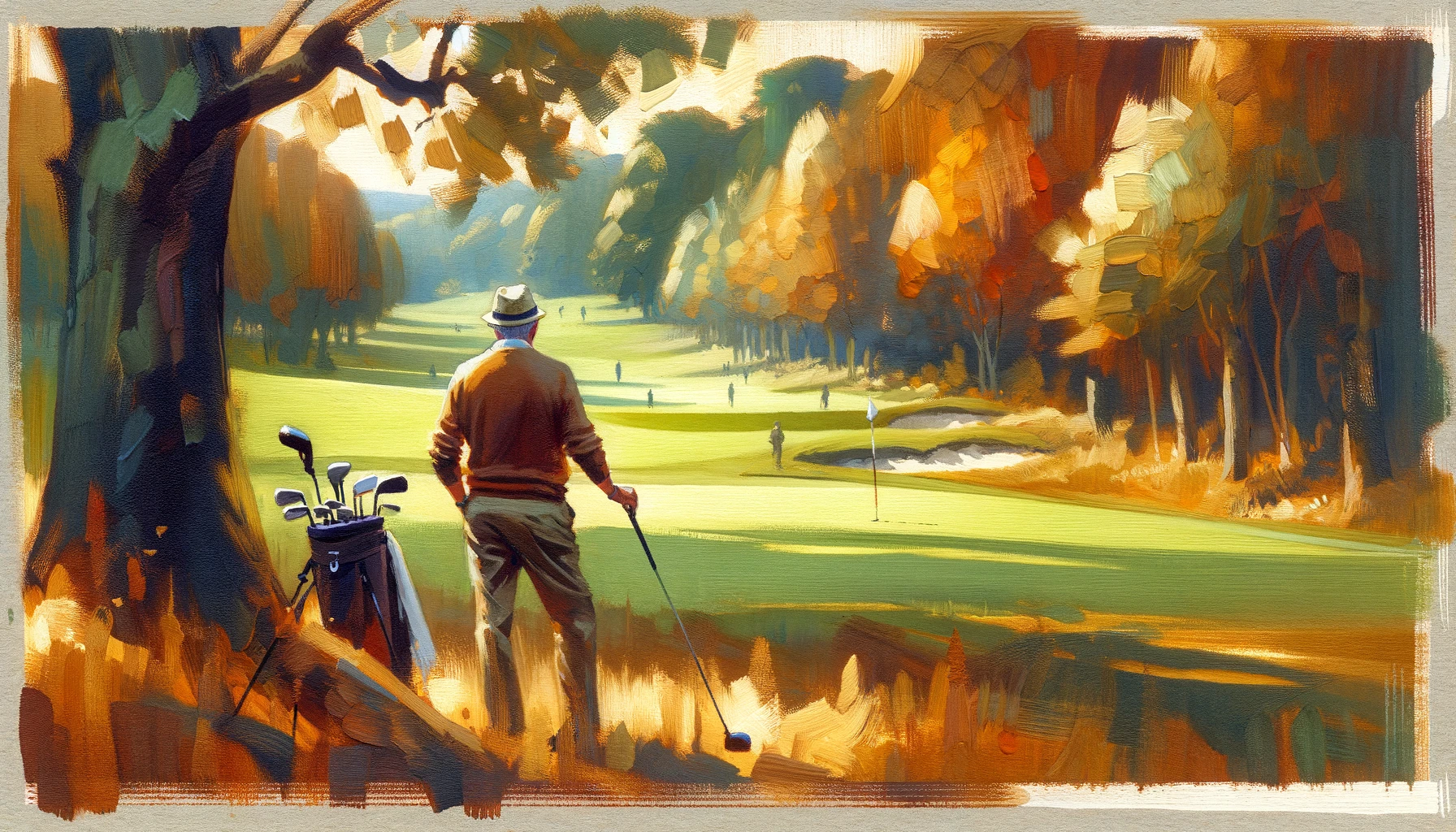 Every shot is a step closer to golfing excellence.
Every shot is a step closer to golfing excellence.Strategies for Windy Conditions
Golf is an outdoor sport, and as such, it's at the mercy of the elements. Windy conditions can turn an otherwise straightforward round into a challenging test of skill and adaptability. Here are some strategies to help you not only manage but excel when the wind decides to play.
1. Club Up or Down Wisely: When playing into the wind, choose a club or two more than you would normally use to compensate for the loss of distance. Conversely, with the wind at your back, a club less can help you harness the wind's power without overshooting your target. The key is to swing smoothly; trying to hit the ball harder can increase spin and exacerbate the wind's effects.
2. Adjust Your Aim: Wind can push your ball off course, so aim to the side of your target opposite the wind's direction. This allows the wind to blow the ball back towards the target. It's a simple adjustment that requires practice to perfect but can significantly improve your accuracy on windy days.
3. Keep the Ball Low: High shots are more susceptible to being caught and carried by the wind. Adjust your stance and swing to hit the ball with a lower trajectory. This might mean playing the ball further back in your stance or choosing a club with less loft.
4. Practice Windy Day Shots: Practicing in the wind can be invaluable. It allows you to experience firsthand how the wind affects your shots and what adjustments you need to make. Don't shy away from practicing when it's windy; embrace these conditions as an opportunity to learn.
5. Mental Fortitude: Windy conditions can be frustrating, but it's important to stay mentally strong. Accept that the conditions are the same for everyone and focus on what you can control. Letting frustration get the best of you will only make the conditions seem more daunting.
6. Observation and Adaptation: Pay attention to how the wind affects not just your shots but others' as well. Observing can give you insights into how to adjust your play. Be prepared to adapt your strategy as conditions change throughout your round.
Mastering golf in windy conditions is about making smart choices, from club selection to shot type. By applying these strategies, you can turn a gusty day on the course into an opportunity to demonstrate your skills and resilience.
The Golfer's Growth Journey: Fairway Mastery Blueprint
Embarking on the journey to become a fairway master is a commitment to personal growth, continuous learning, and the joy of golfing. The Golfer's Growth Journey: Fairway Mastery Blueprint is designed to transform weekend warriors into masters of the fairway, enriching lives and expanding social circles through the beautiful game of golf.
1. Commit to Continuous Improvement: The journey starts with a commitment to never stop learning. Whether it's mastering the fundamentals or exploring advanced techniques, there's always room for improvement. Embrace each round as an opportunity to learn something new.
2. Practice With Purpose: Quality practice is more valuable than quantity. Focus on specific aspects of your game with each practice session. Whether it's working on your swing, perfecting those tricky shots, or practicing under different conditions, make each moment count.
3. Understand the Mental Game: Golf is as much a mental game as it is a physical one. Cultivate patience, resilience, and a positive mindset. Learn to manage your emotions on the course, celebrate your successes, and learn from your mistakes.
4. Engage With the Community: Golf is a social sport. Engage with your local golfing community, join clubs or online forums, and share your journey with others. Learning from fellow golfers can provide new insights and make your journey more enjoyable.
5. Set Goals and Celebrate Achievements: Set clear, achievable goals for your game. Whether it's breaking a certain score, mastering a particular shot, or playing in more challenging conditions, goals give you direction. Celebrate your achievements, no matter how small, as they are milestones on your journey to mastery.
The journey of a weekend golfer to becoming a fairway master is filled with challenges, learning, and unforgettable moments on the course. By focusing on improving technical skills, mastering advanced shots, and adapting to the elements, you unlock a new level of enjoyment and satisfaction in the game. The Golfer's Growth Journey: Fairway Mastery Blueprint is not just about becoming a better golfer; it's about enriching your life through the game. As you continue on this path, remember that each round, each shot, and each moment on the course is a step towards not just mastering golf, but also mastering oneself. Embrace the journey, and let the fairways be your guide to personal growth and joy.
 Unlocking the secrets to conquering the golf course.
Unlocking the secrets to conquering the golf course.Key Takeaway: Improving Technical Skills in Golf
The journey to mastering golf is filled with lessons on precision, strategy, and mental strength. Here's a summary of the essential points covered:
- Advanced Shots Mastery: Learn and practice the draw and fade to navigate the course like a pro.
- Distance and Direction Control: Achieve mastery over your shots through understanding and practicing with various clubs.
- Playing in Windy Conditions: Adapt your strategy and shot selection to maintain control in challenging weather.
- Continuous Learning: The Golfer's Growth Journey is a testament to the endless pursuit of improvement and excellence on and off the course.
FAQ: Mastering Your Golf Game
How can I improve my golf swing?
How can I improve my golf swing?
Improving your golf swing involves consistent practice, focusing on your form, balance, and follow-through. Consider lessons from a professional to get tailored advice.
What are the best drills for improving accuracy?
What are the best drills for improving accuracy?
Practice drills like the "gate drill" for putting accuracy and the "alignment stick drill" for driving accuracy can significantly improve your precision on the course.
You're probably thinking mastering technical skills takes natural talent, right?
You're probably thinking mastering technical skills takes natural talent, right?
Well, many golfers have significantly improved through practice, dedication, and the right guidance, proving that skills can be developed over time.
What's the importance of a pre-shot routine?
What's the importance of a pre-shot routine?
A pre-shot routine helps establish consistency and confidence before each shot, contributing to improved performance and focus.
How to hit longer drives in golf?
How to hit longer drives in golf?
Longer drives can be achieved by optimizing your swing speed, improving your physical fitness, and ensuring your equipment is suited to your playing style.
How do I choose the right golf clubs?
How do I choose the right golf clubs?
Selecting the right golf clubs depends on your skill level, swing speed, and personal preferences. Getting fitted by a professional can provide personalized recommendations.
Can golf simulators help improve my game?
Can golf simulators help improve my game?
Yes, golf simulators can be a valuable tool for improving your game, offering detailed feedback on your swing, ball flight, and more in a controlled environment.
You're probably thinking improvements take years to notice, right?
You're probably thinking improvements take years to notice, right?
Actually, with focused practice and specific goals, many golfers see noticeable improvements in their game within a few months.
What mental strategies can improve my golf game?
What mental strategies can improve my golf game?
Developing a strong mental game involves setting realistic goals, practicing mindfulness, and maintaining a positive attitude, even under pressure.
How often should I practice to improve my golf game?
How often should I practice to improve my golf game?
The frequency of practice can vary, but consistency is key. Aim for several practice sessions per week, focusing on different aspects of your game.
How to improve putting accuracy?
How to improve putting accuracy?
Improving putting accuracy requires focused practice on your stroke mechanics, consistency in your setup, and learning to read greens effectively.
Golf exercises for more powerful shots?
Golf exercises for more powerful shots?
Incorporating strength and flexibility exercises focused on your core, legs, and shoulders can lead to more powerful and consistent golf shots.
You're probably thinking that improving technical skills is only for competitive golfers, right?
You're probably thinking that improving technical skills is only for competitive golfers, right?
In fact, golfers at all levels can benefit from refining their technical skills, leading to more enjoyment and lower scores even in casual play.
What are the secrets to a lower golf handicap?
What are the secrets to a lower golf handicap?
Lowering your handicap involves consistent practice, strategic course management, improving your short game, and learning from each round to make adjustments.
Tips for playing golf in windy conditions?
Tips for playing golf in windy conditions?
When playing in windy conditions, adjust your shot selection and strategy, such as keeping the ball lower and choosing clubs wisely based on the wind's direction and strength.
Strategies for mastering difficult golf courses?
Strategies for mastering difficult golf courses?
Mastering difficult courses requires strategic thinking, such as planning your shots, practicing course management skills, and staying patient and adaptable throughout the round.



